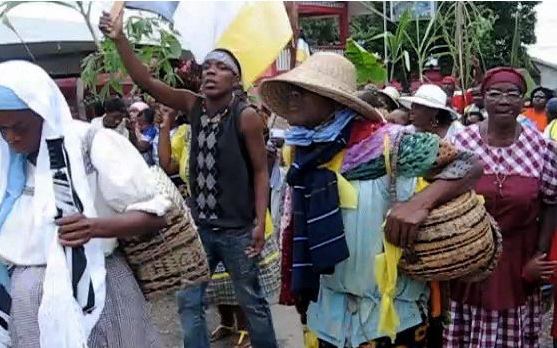Garifuna People (Garinagu) descend from shipwrecked Africans who mixed with Carib and Arawak Amerindians on the island of Saint Vincent.
The dark skin and culture of the Africans mixed with the language and culture of the Carib Indians. This created a rich new ethnicity and culture, now known as Garifuna.
The French and British colonists battled for control of St. Vincent in the 18th century. The Garifuna sided with the French. But in 1795, the British defeated the French, and expelled all Garifuna people from the island.
Garifuna families set off across the Caribbean in small wooden canoes carrying important crops with them to plant wherever they settled. Half died before reaching land and safety. Those that survived, settled along the Caribbean coasts of Nicaragua, Honduras, Guatemala and Belize.
Garifuna Language and Songs
Today, Garifuna language blends Arawak, English, Spanish, French and west African languages. ‘Garifuna’ describes the culture and language, but use the word ‘Garinagu” to describe the people as a whole. Music, singing, drumming and dancing are integral parts of Garifuna culture. Many of the songs and dances tell stories about Garifuna history and culture.
Garifuna Settlement Day
Every year on the 19th of November, Garifuna people in Belize celebrate the arrival of the Garinagu people in Belize. Drumming and dancing continues through the night. By sunrise, boats arrive to re-enact the arrival of their ancestors to Belize. The arrival of the boats is celebrated by those onshore with drumming and dancing. A parade then takes place through town ending at the Catholic church. Celebrate with us if you visit in November!
[wdi_feed id=”2″]
